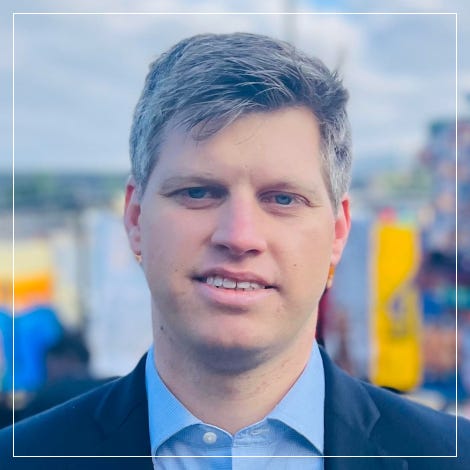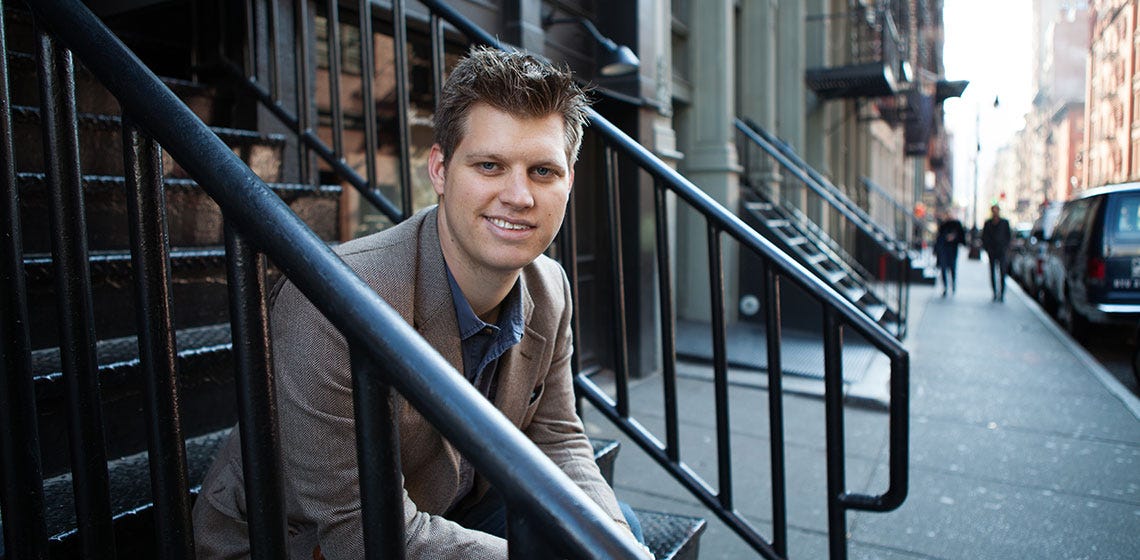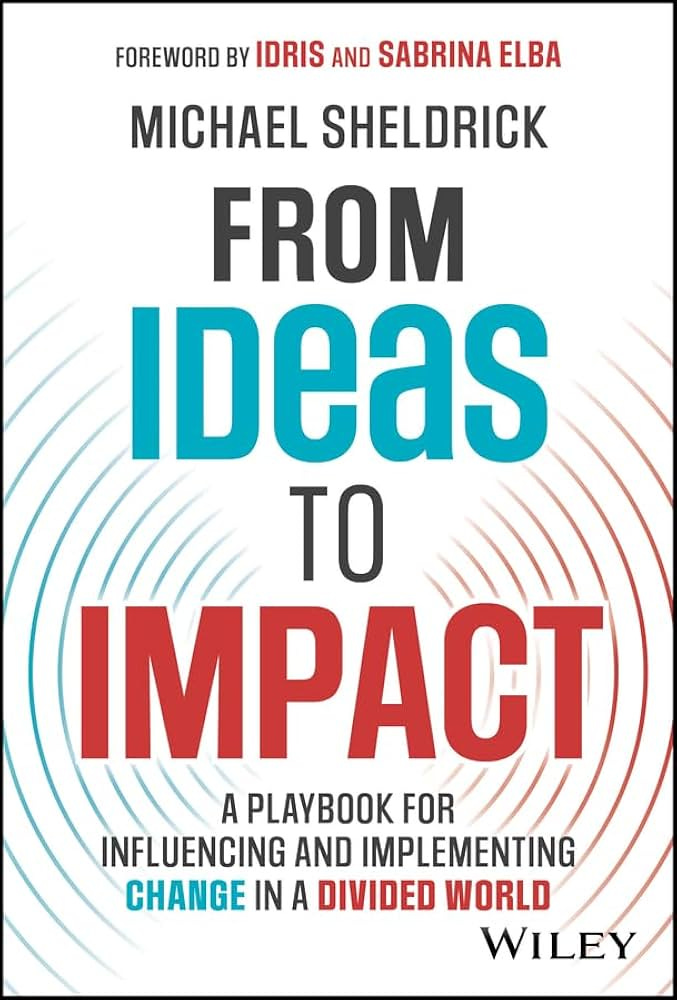Interview: Michael Sheldrick - Driving Global Change with Policy, Technology, and Creativity
How the Global Citizen Co-Founder Uses AI and Advocacy to Tackle Poverty, Climate, and Inequality
In this edition of Building Creative Machines, we are delighted to feature Michael Sheldrick, a visionary in policy entrepreneurship, advocacy, and global change. Michael co-founded Global Citizen, and his efforts have catalyzed over USD 40 billion in commitments to address some of the world's most pressing challenges. As an author, professor, and Forbes contributor, Michael has dedicated his career to tackling systemic barriers and fostering collaboration across sectors. His latest book, From Ideas to Impact, distils years of experience into actionable insights for changemakers.
Image: Credits to Estoril Conferences
We had the privilege of meeting Michael at the Estoril Conferences in Lisbon, Portugal, where he delivered a compelling talk on the intersection of technology, policy, and global impact. During our conversation, we explored his journey, insights on the role of AI in social change, and the lessons from his groundbreaking work at Global Citizen. What follows is a deep dive into Michael's unique perspective and the frameworks he uses to drive tangible outcomes in a divided world.
Image: Credits to The University of Western Australia
How would you summarize the key findings of your work in just two paragraphs?
At its heart, my work underscores the transformative power of collective action combined with innovative technology to bring about systemic change on the biggest challenges of our times. From my early days co-founding Global Citizen to the present, I've worked with incredible colleagues and partners to harness apps, social media, and AI to drive over 30 million citizen actions, distributing and tracking over USD$40 billion in commitments and touching over a billion lives. This journey demonstrates that empowering individuals with the tools to act can catalyze real-world policy changes, whether it's protecting the Amazon Rainforest or addressing global poverty.
The key takeaway is clear: technology, when coupled with purpose, is a force multiplier for good. But this comes with a caveat—it’s essential to address systemic barriers like access to reliable energy so that the benefits of enhanced civic engagement via technology are accessible to all. Without intentional action and investments, the divides between the haves and the have-nots will only grow. My latest work emphasizes the importance of policy entrepreneurship: combining bold vision, collaboration, and implementation to ensure technology works for everyone, not just a privileged few.
What has been the most unexpected discovery or insight in your work about AI?
One of the most surprising insights has been AI’s dual role as a tool for efficiency in the social impact sector and a potential disruptor of positive progress. At Global Citizen, we use AI for everything from transcribing meetings to generating first drafts of grant proposals, saving time and resources. Yet, on the flip side, AI risks undermining industries like music and creativity through inadequate intellectual property protections. I hadn’t fully appreciated how much these disruptions could harm communities and economies, particularly in regions like Africa, where creative industries have the potential to drive significant economic growth and job creation over the coming decades. AI’s potential is vast, but it must be harnessed responsibly to avoid exacerbating inequalities.
How has your perspective shifted over the last year?
This past year has deepened my belief in the critical role of bridge-building and policy change. I’ve witnessed how AI can enhance productivity and creativity, but its benefits depend on thoughtful integration into systems and policies that ensure inclusivity. Despite the challenges, I remain optimistic because solutions exist—such as balanced intellectual property frameworks and the World Bank's initiative to provide 250 million people with access to electricity across Africa by 2030.
However, implementing these solutions effectively requires policy entrepreneurship from citizens, cultural leaders, philanthropists, and those in the social impact sector. It also demands a mindset of pragmatic idealism and bridge-building, focusing on impact over ideology. For instance, addressing the unexpected side effects of rising energy consumption—driven by the vast energy needs of AI data centers—may require us to challenge our assumptions and reconsider taboos, such as those surrounding nuclear power. While I don’t claim to have all the answers, an open-minded and collaborative approach will be essential.
Encouragingly, 2024 saw the launch of new partnerships and collaborations that reflect this mindset and are poised to make significant progress in 2025. Watch this space!
In your view, what is the role of AI in enhancing human creativity and impact?
AI has immense potential to amplify human creativity and impact. Just ask many creators, artists, and musicians themselves! It can streamline tedious tasks, freeing time for creators to focus on innovation. For example, artists use AI for brainstorming, while organizations like ours leverage it for data analysis and content creation, bringing stories to life in ways that resonate deeply with audiences. However, AI must be guided by ethical frameworks to ensure it protects—not exploits—human creativity. Without safeguards, the same technology that enhances creativity could erode it, particularly in vulnerable sectors like music, where intellectual property rights are already under threat. This is crucial because, with the right investments and policies in place, growth in creative industries could offset job losses from automation and technological shifts in traditional sectors like manufacturing and agriculture.
As I emphasize in my book, From Ideas to Impact, action is the antidote to apathy. AI and other technologies give us unprecedented tools to address global challenges, but their potential will only be realized if we act intentionally and inclusively. Whether through policy, advocacy, or creativity, our collective efforts can shape AI into a tool for equity and poverty alleviation. The question isn’t whether AI will define our future but how we’ll shape its role in the world we want to build. We may not have all the answers yet, but as Eleanor Roosevelt famously said, 'The way to begin is to begin.'
Image: From Ideas to Impact, by Michael Sheldrick
Michael Sheldrick’s career demonstrates the transformative power of policy entrepreneurship and collective action in addressing global challenges. From pioneering innovative campaigns at Global Citizen to championing equitable applications of technology, Michael exemplifies what it means to build bridges across divides. His insights remind us that creating a better future demands vision, collaboration, inclusivity, and intentional action.
As Michael shared during our interview, the true potential of technology like AI lies in its ability to empower creativity, drive systemic change, and foster equity—provided we guide its development thoughtfully. His optimism, tempered by pragmatic realism, is a call to action for changemakers everywhere.
For more on Michael’s philosophy and actionable strategies, don’t miss his book From Ideas to Impact. It offers a playbook for turning bold ideas into real-world change. The same vision is reinforced at his substack and TED Talks. As Michael emphasizes, the time to act is now.
Stay inspired and keep building,
Gonçalo & Filipa





